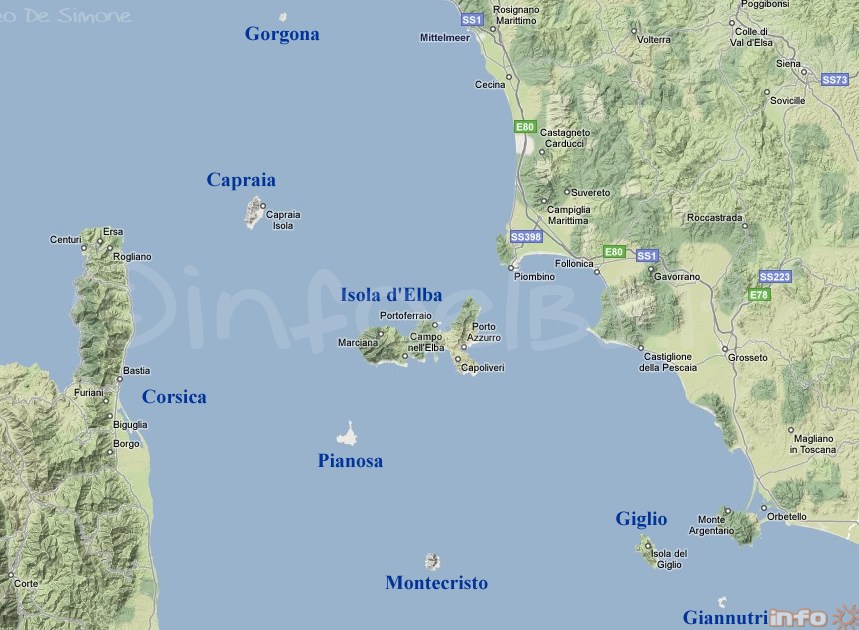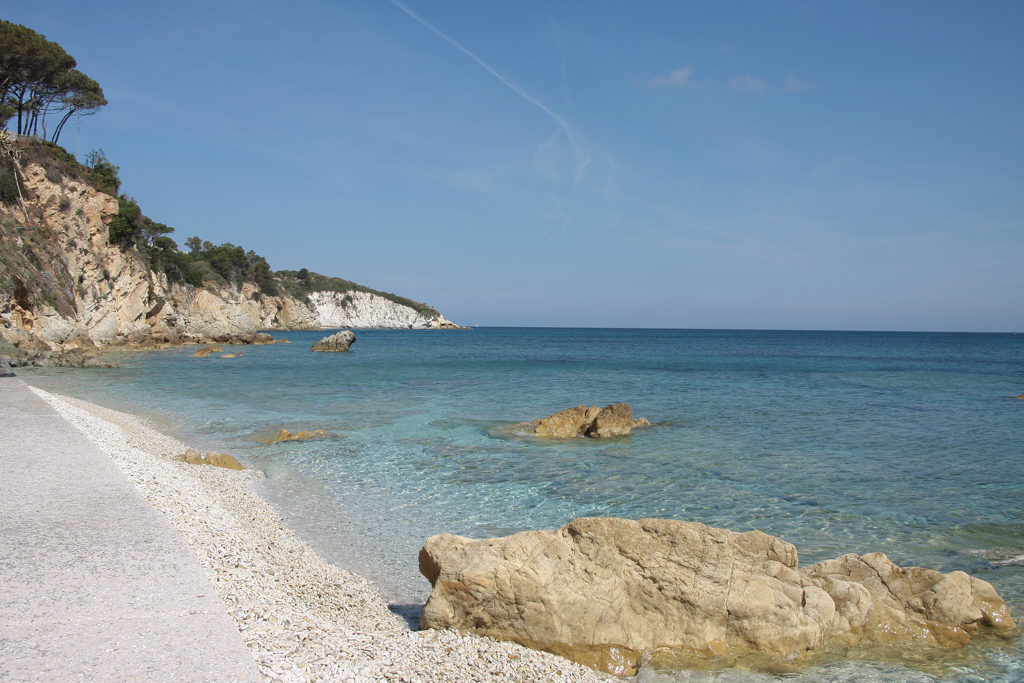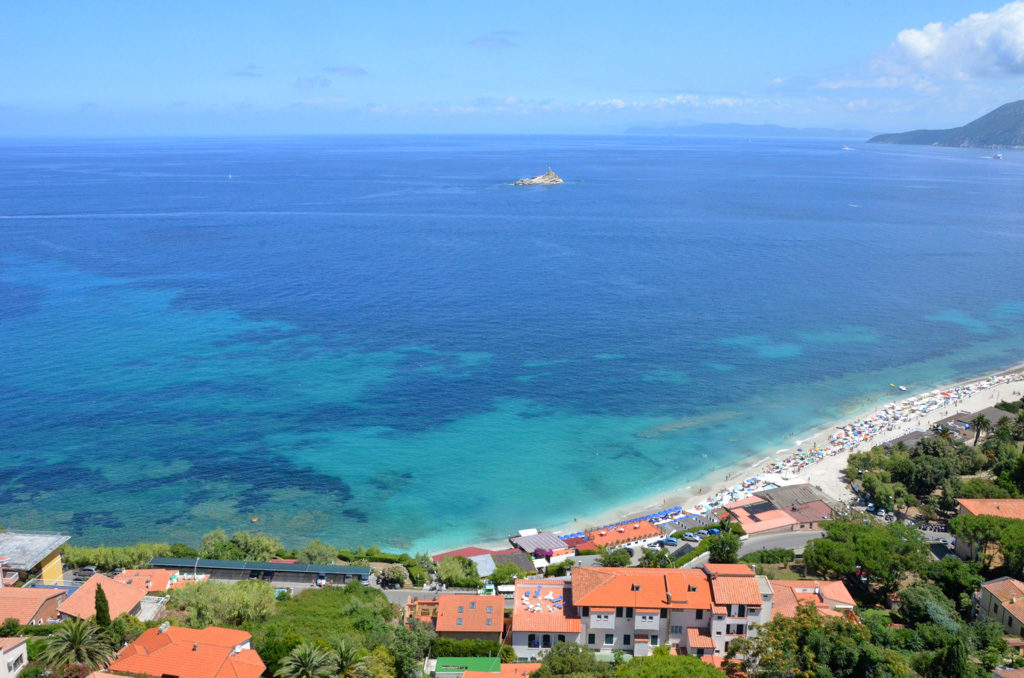Besides the fact that her perimeter measures only 147 kilometres, Elba is capable of offering a mild climate and a multitude of diverse landscapes and scenery: romantic fishing villages, small towns on rocky hill-tops, ancient castles, green valleys and enchanting bays combined with sandy beaches. Wonderful beaches, magnificent cliffs, luxuriant hills with sweet-smelling flowers, woods with age-old trees, little villages looking out over the sea or situated on the ridges.
This is what you’find out if you decide to visit the Island of Elba running across the numerous paths of the National Park with your knapsack on your shoulders, riding a horse or a mountain-bike, ploughing the waves of the cristal-clear sea on board of a canoe or a sailing boat.
Only minutes away from the steep cliffs that plunge into the crystal clear sea, the granite mountain, Monte Capanne rises to 1019 metres of altitude. The ever present evidence of history and culture, combined with an extraordinary wealth of natural beauty, make this magical island unique.














